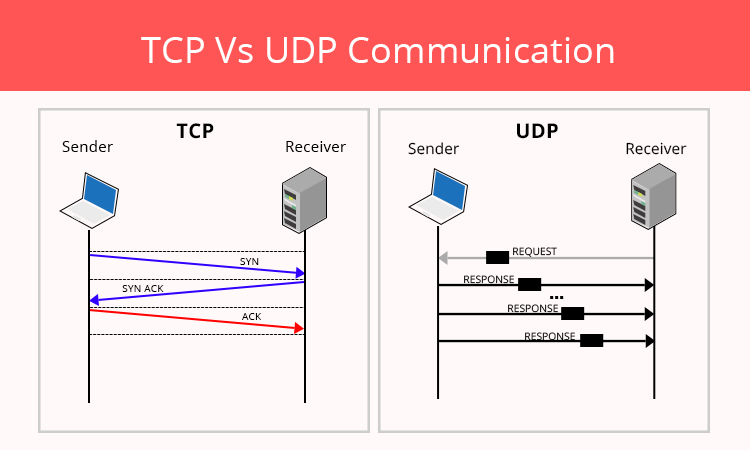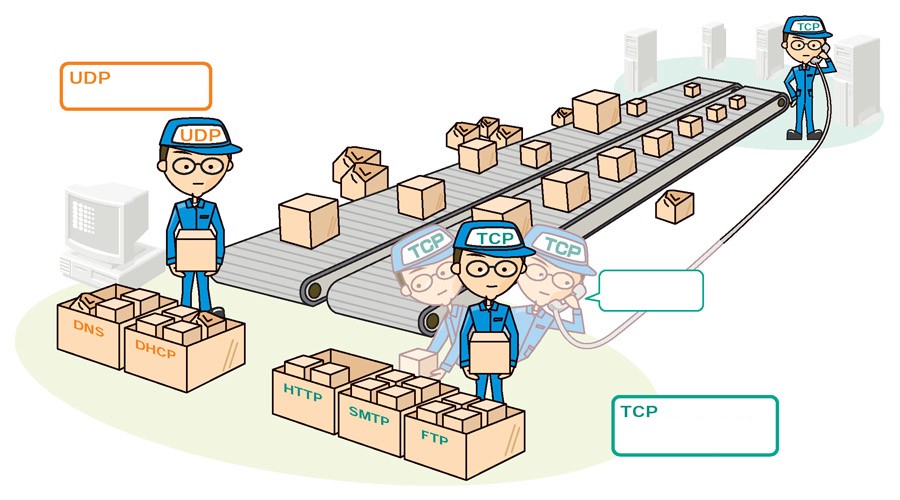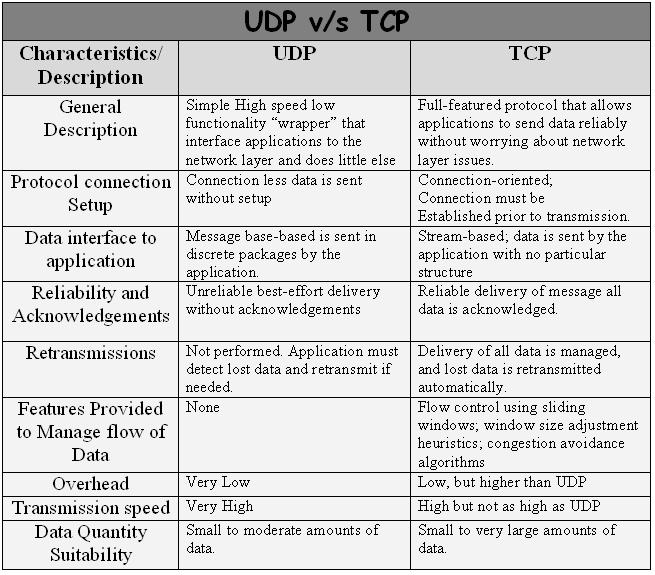Simply put, TCP and UDP are transport layer protocols which are foundational elements of the Internet. They are both part of the TCP/IP protocol suite and are designed for delivery.
What do you know about Internet connectivity? When information is exchanged between devices, network communication is based on the OSI model. This model uses seven layers of interaction between network devices with two categories: Media (physical, data link, and network) and Host (transport, session, presentation, and application).
If you dig deeper, the data you transmit is converted into a stream, which is then split up into packets. These can be Ethernet packets, IP packets, etc. Packets are delivered to the recipient and are collected there converting into a data stream.

The differences between TCP and UDP in the IP stack are barely distinguishable. During transmission, they are encapsulated in IP packets that can be used by applications. There are ports in both. Therefore, to find the differences, you have to look into the TCP and UDP packets itself.
For example, UDP only contains a checksum indicating the packet length. TCP contains much more data. There are window, acknowledgement, sequence and other information. It turns out that technically TCP is more complicated, and thus provides more reliable delivery.
What is TCP and UDP?
TCP (Transmission Control Protocol) – is a universal communication protocol, created in 1974 and used worldwide up to now. Imagine, almost 50 years have passed, mobile Internet and wireless networks are everywhere, yet TCP remains unchanged.
This is because TCP was originally designed for a secure connection. Before initiating data transfer, the protocol uses a handshake protocol to establish a connection, and only then starts transmitting packets. The reliability of the protocol stems from the fact that it does not lose packets of information during transmission by sending a request to acknowledge the receipt. The data will be resent if required. Packet sequencing is preserved.

Among the disadvantages of the protocol, we can highlight its low speed. This is due to the difficulty of ensuring reliable data transmission with packet sequencing.
UDP (User Datagram Protocol) was created in 1980. It is a simpler protocol and does not require a connection between hosts to transmit data. Packets are sent immediately without checking with the client to see if it is ready to receive data. Because of this approach, the protocol is less reliable – packets can easily get lost. In addition, there is no order of sending data packets, so the recipient receives unordered information. On the other hand, data transmission is much faster compared to TCP.
Key differences between TCP and UDP
Thus, UDP is a fast protocol, but TCP comes with a guarantee of reception and data consistency. To summarize, let us formulate the differences between these two protocols:
Reliability. TCP is more reliable, because it uses time-outs, requires a receipt confirmation and sends data repeatedly if necessary. The UDP protocol has nothing of this, and data are often lost on delivery to the host-receiver.
Consistency. TCP guarantees the transmission of data packets in the sequence, which was originally specified. UDP does not have such features.
Speed. UDP is much faster than the heavyweight TCP, requiring the establishment of a reliable connection and other conditions for data transmission.
The method of data transfer. TCP involves streaming data transfer, the boundaries of data fragments are not marked. UDP uses a datagram method, when the receiver checks the integrity of the packets only when receiving the message. Data packets in this case have marked borders.
To summarize the difference between TCP and UDPis the following: the TCP protocol is essential in situations requiring an
accurate transmission of data with acknowledgement of receipt. For example for
sending media content, ordinary Internet correspondence. UDP is good for voice
messages and streaming video from IP-cameras. Each protocol is useful and they
perfectly complement each other. TCP is just more suitable for long sessions
while UDP is for short sessions.

If you still have questions regarding the technology or to learn more about Cloud4Y platform, contact us by email: sales@cloud4y.ru or by phone 8 (495) 268 04 12.




